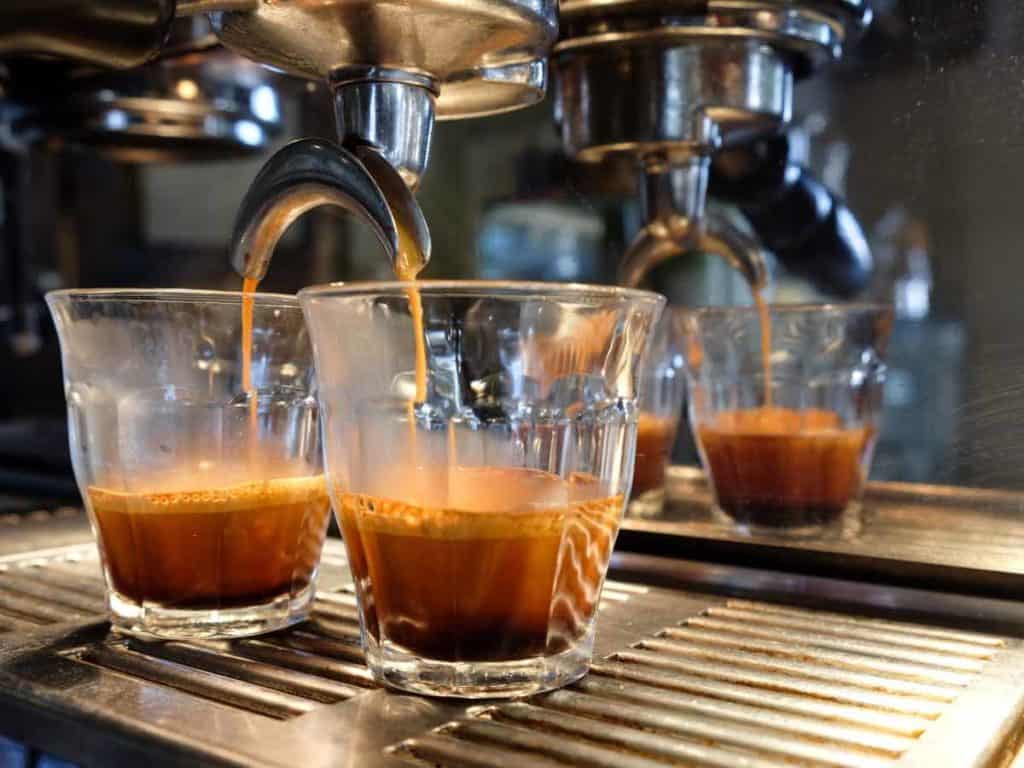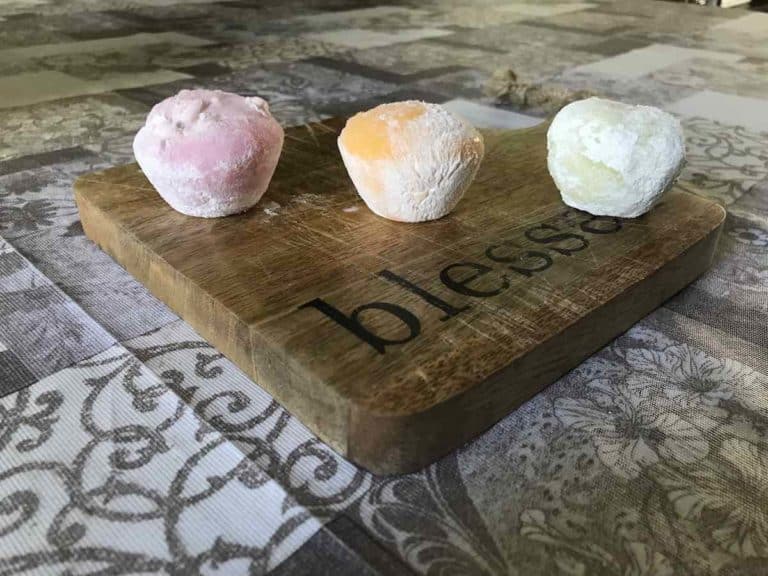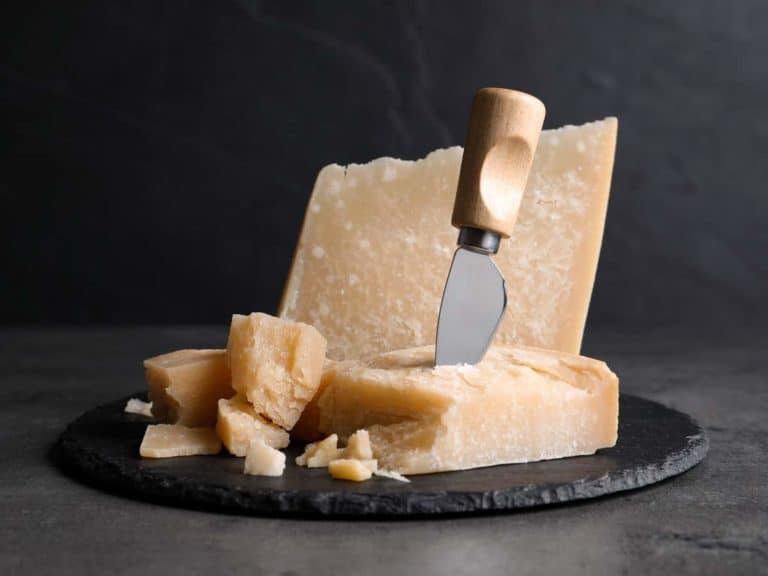How to Buy and Store Coffee Beans to Keep Them Fresh
Believe it or not, coffee beans start to lose their freshness soon after they are roasted. That is why they should be stored properly the minute that they get from the local grocery store or your favorite coffee shop to your home. And now you may be wondering how to store coffee beans to keep them fresh.
One can store coffee beans in an unopened bag in a cool, dry place for up to nine months. Coffee beans in an opened bag should be transferred to an opaque, airtight container and stored away from light and heat. Coffee beans may be kept in the freezer, too, for up to two months.
If you want nothing but to brew and sip the perfect cup of coffee each time, it’s a must that you store your coffee beans at home like a pro.
Luckily, it’s not that difficult to keep coffee beans fresh for as long as possible.
Below are some of the simple steps to follow so that you can avoid doing the guessing game and ending with stale coffee.
How to Buy Coffee Beans at the Grocery Store
There is no point in knowing the steps on properly storing coffee beans to keep them fresh for a long time if there are no fresh coffee beans to store to begin with.
So, in other words, it is of utmost importance that the coffee beans you will attempt to store the right way at home are as fresh as they can possibly be.
Getting your hands on the boldest and brightest cup of coffee at home every time, needless to say, begins with buying nothing but the freshest coffee beans at the grocery store.
Especially if this is your first time to consider buying coffee beans to become a serious coffee drinker, it is very much likely that there is a question that you would like to ask but are too embarrassed to do so for fear of being judged.
It’s none other than which of the seemingly endless brands of coffee beans you should go for.
Is there a difference in coffee brands?
Coffee brands differ from one another in terms of the coffee beans used and roasting employed. They also vary from each other when it comes to processing, from harvesting the coffee beans to packing them. Because of these factors, coffee brands tend to differ in terms of quality and taste.
Worry not because there is no need to spend a great deal of your time and energy to trying to know everything that one can learn about a coffee brand.
Most of the time, all you have to do is get the suggestion of family and friends who are certified coffee lovers or enthusiasts.
Is there a coffee brand which lasts longer?
Coffee brands known to offer high-quality products tend to last longer. Others whose coffee beans, processing, and packaging methods are substandard may not last as long. No matter the brand, it’s a must for coffee beans to be stored properly to keep them fresh for as long as possible.
Keep in mind that it’s not just the shelf life that different coffee brands tend to vary in. Also making each brand different from the next is the price tag, and the smell and taste of the resulting brew.
So, in other words, you should also choose a coffee brand based on your budget and preference.
What are the different types of coffee beans?
There are four primary types of coffee beans: Arabica, Robusta, Liberica and Excelsa. They differ from each other based on where they’re grown. They also differ in aroma, taste and caffeine content. Arabica and Robusta are more common coffee beans. Liberica and Excelsa, which are related, are rare.

Serious coffee drinkers can easily tell the difference among the different coffee bean types. Many casual coffee drinkers, on the other hand, cannot seem to tell apart one bean type from the other.
Let us get to know the four primary types of coffee beans more:
Arabica
If you want to make sure that you can easily get your hands on coffee beans each time, opt for Arabica.
That’s because it is the most commonly produced coffee bean type on the face of the planet. As a matter of fact, Arabica makes up more than 60% of the world’s coffee production.
Yup, that’s how common this type of coffee bean is.
Arabica beans are farmed in areas that are elevated and get plenty of rain, such as Brazil. The Latin American country, coincidentally, is the number one producer of Arabica beans.
Compared to other coffee bean types, Arabica has the most delicate flavor. It’s also kind of sweet and has just the right amount of acidity. It’s no wonder why many hardcore and occasional coffee drinkers love it.
But be warned: Arabica tends to lose some of its taste when blended with creamer or milk, or when served cold.
Robusta
Trailing behind Arabica beans in terms of global production is Robusta. Just like what the name suggests, it has a robust flavor. In fact, in many instances, it has a harsh and somewhat rubbery flavor.
It’s because of this why, despite being the second most widely cultivated and exported coffee bean type all over the planet, Robusta beans are not that popular.
However, it is favored more than other types of coffee beans in regions where drinking very strong coffee is the norm, like the Middle East, Europe, and Africa.
Especially if you are a self-confessed caffeine junkie, then you will surely love drinking a cup of Robusta coffee every single time.
That’s because it has the highest caffeine content of all the four primary types of coffee beans. According to coffee experts, Robusta beans pack twice the caffeine content of Arabica beans.
Sipping a cup of it will surely give you a jolt!
Because it has tons of caffeine, Robusta beans are easy to grow as caffeine has pesticidal properties. And because they are trouble-free to farm, Robusta beans are some of the most pocket-friendly coffee beans around.
Liberica
These days, it’s rare for coffee bean shoppers to come across Liberica at most grocery stores. That’s because it is a very rare coffee bean type. As a matter of fact, it makes up only 2% of the planet’s overall coffee production.
It was in the late 1800s when the Liberica plant was first farmed in the Philippines, which was a territory of the US back then. The time came when the Philippines declared its independence. This caused the US to cut ties with the country, and the exporting of Liberica beans came to a halt.
Back in the mid-1990s, Liberica came into being once more when the remaining Liberica plants in the Philippines were planted elsewhere in Asia. However, the effort wasn’t able to make the coffee bean popular all over again.
Other than being rare, Liberica also has distinctive properties. It has a unique flowery and fruity aroma. Its woodsy or smoky flavor is hard to miss, too. Many of those who have already tired consuming Liberica coffee were surprised to learn that it didn’t taste like coffee at all. Many of them said that it tasted more like dark chocolate.
Excelsa
Technically speaking, Excelsa is a member of the Liberica family. Many years ago, Excelsa was considered as an individual coffee bean type.
Back in 2006, however, it was re-classified by a British botanist as a Liberica bean species.
Because Excelsa beans and Liberica beans are practically one and the same, it doesn’t come as a surprise why the two types of coffee beans have a lot of things in common.
For one, both of them are primarily grown in Southeast Asia. They are also both rare — Excelsa accounts for only 7% of the world’s coffee production.
Despite being a mere family member of the Liberica plant, a lot of coffee enthusiasts still consider Excelsa as a separate entity. They love that the coffee bean has a tart, fruity and mysterious taste.
Most of the time, you will find coffee blends with Excelsa in them to give every serving more power. It also allows blends to have a lingering taste. However, many prefer to brew and enjoy Excelsa alone.
Now that you’re acquainted with the four primary coffee bean types, let’s talk more about buying coffee beans…
Whole Beans vs. Ground Coffee: Which One to Get?

Other than the type of coffee bean, there is another very important matter that you should use as a deciding factor when shopping for coffee beans at the grocery store or elsewhere.
And it’s none other than whether you should opt for whole beans or ground coffee instead.
Perhaps you have heard or read over and over again that whole beans are the ones that every coffee drinker should get. Well, it doesn’t necessarily mean that ground coffee, or also called pre-ground coffee, is bad.
The fact that it is available practically everywhere you look only means that people are buying ground coffee!
Both whole beans and ground coffee comes with their own set of pros and cons. Because of this, each one of them is ideal for a particular type of coffee drinker.
It’s important to know what whole beans and ground coffee each has to offer. Similarly, it’s a must to identify your coffee drinking preferences or needs.
Do you consider yourself as a serious coffee drinker who wants nothing but the freshest and boldest cup of coffee each time? Then it’s a good idea to get your hands on whole coffee beans.
Because less surface area is exposed to the elements, whole beans tend to impress the nose and taste buds better. They are usually ground a few minutes before brewing them.
This is why they are capable of producing coffee that has a complex and fresher taste, as well as a bolder aroma.
Due to exposure of more surface area to the air, ground coffee tends to lose a lot of its essential oils quickly. Due to this, it usually produces coffee with less pronounced taste and aroma, too.
What’s nice about ground coffee is that it’s usually cheaper than whole beans. And because there is no need for you to buy a coffee grinder, the savings can pile up rapidly.
There are also plenty of ground coffee choices to choose from. There are lots of flavors available, too, ranging from peppermint, vanilla, eggnog, pumpkin pie to whiskey!
In exchange for the fullness of whole beans flavor- and aroma-wise is the fact that you will have to grind them first, which can take up your time as well as, at the outset, money.
The great thing about using whole coffee beans is that you can personalize your every experience with a cup of coffee.
By changing the size of the grounds and tweaking the brewing time, you can have a cup of coffee that suits your senses perfectly. For many, brewing whole coffee beans makes every coffee time more pleasurable.
So, before you grab a bag, figure out first which of the two options suits you better.
Related Post: Best Way To Store Baklava
Don’t Forget to Check Out the Roast Date
Prior to placing a bag of coffee beans in your shopping cart, there is something on the packaging that you should inspect first: the roast date. This is especially true if you want a cup of coffee that’s bold instead of flat.
But just because the coffee beans you are about to buy have just been roasted yesterday or today, based on the packaging, doesn’t mean right away that it’s the one to get.
If you bring them home and brew them, you will surely be surprised to realize that the resulting brew doesn’t taste and smell the way you expected it to be.
It’s exactly because of this why the roast date is a matter that many find complicated.
Well, fortunately, you are getting your information from the right source.
Here’s an easy-to-understand explanation of why newly roasted doesn’t necessarily equate to a better brew:
Carbon dioxide forms inside the beans during roasting. After roasting, it is slowly released, which is called degassing. The process of degassing can take two days to two weeks. If you brew coffee beans that are not properly degassed, you will have a cup of coffee with bubbles and tastes sour.
However, the length of the degassing process tends to vary from one coffee bean type to the other. Also, it changes with the roasting level (which we will talk about later).
For instance, a darker roast degases faster than a lighter roast. Temperature, humidity, light, and a few other factors have an impact on the degassing process, too.
To be safe, wait for at least three days to a week before brewing freshly roasted coffee beans. Or you may also ask the roaster or vendor about when is the best time to start brewing.
Light Roast vs. Medium Roast vs. Dark Roast
Aside from the roast date, you should also consider the roast level of the coffee beans you are about to pay for.
The name of the roast pretty much explains the length of roasting. For instance, dark roast is roasted longer than medium roast. In the past, coffee shoppers only had medium roast and dark roast to choose from. But since the quality of coffee beans being farmed has considerably increased in quality, light roast came into being.
Let’s take a quick look at the different coffee bean roast types:
Light Roast
One look and it’s plain to see that light roast is roasted the least. The coffee beans are light brown instead of the usual dark brown. They also have a matted look — because the coffee beans didn’t spend a lot of time in the roaster, not a lot of the essential oils formed within and rose to the surface.
Usually, light roast is perfect for high-quality coffee beans that have unique properties. To make sure that the things that make these coffee beans exceptional remain intact, they are not roasted for a long time.
Many light roast coffee beans have crisp acidity, and the flavor and aroma can vary widely, depending on the beans.
Medium Roast
Compared to the color of light roast coffee beans, medium roast coffee beans are slightly darker. They may also have a non-shiny appearance since the limited roasting time prevents the formation of enough essential oils.
Because they have spent a little more time in the roaster, the coffee beans tend to have a bolder and darker flavor profile. They are less acidic, too, which is why they tend to yield a sweeter brew.
Unfortunately, medium roasting robs most coffee beans of their light notes, causing them to be more intense.
Most specialty coffee roasters go for medium roast since it appeals more to average coffee drinkers than light roast.
Dark Roast
Dark brown and shiny — these are the words that best describe dark roast coffee beans. If you want nothing but to delight yourself with a cup of coffee that has a heavy body and deep flavor, then it is a wonderful idea to opt for dark roast when shopping for a bag of coffee beans.
The flavor profile difference between light roast and dark roast can be quite spectacular.
Even without reading the packaging, it’s for sure that you will know that the coffee you are drinking is a dark roast, thanks to its nutty, caramelly, and chocolatey taste. The acidity level is extremely low, too.
Unfortunately, dark roasting causes coffee beans to exhibit pretty much the same flavor even though they are of different varieties. So, in other words, it tends to give everyone a uniform coffee-drinking experience.
That’s basically everything you need to know about coffee bean roast levels!
Before we move to a different coffee bean-related matter, there’s a myth that we need to debunk first. And it’s none other than dark roast packs more caffeine than medium or light roast.
Many people assume that just because dark roast coffee has a stronger flavor than medium or light roast means that it has more caffeine.
Well, here’s the truth: the caffeine content of dark roast coffee and medium or light roast coffee is virtually the same! The roasting process does not have any effect whatsoever on the amount of caffeine in the coffee beans.
Now that you have a better idea on how to buy coffee beans at the grocery store, it’s now time to get to the heart of this article. And it’s none other than how to store coffee beans to keep them fresh.
Ways to Store Different Coffee Bean Products
Coffee beans inside an unopened bag slowly deteriorate.
They tend to stay in excellent shape for one to two weeks only. You may still be able to grind and brew coffee beans past that time frame alright.
However, most especially if your taste buds are fussy, you will surely notice that a cup is flat and has lost its usual liveliness.
The deterioration of coffee beans considerably speeds up the minute that you open the bag and the contents are exposed to the outside environment. This is why they need to be stored properly.
Here are the different ways to store coffee beans the right way…
How to Store Whole Coffee Beans
The best way to store whole coffee beans is in the packaging that they come in. When placed in a cool and dry place, they can keep for six to nine months. Worry not about the beans being unable to degas. The bag has a valve that allows carbon dioxide to escape but does not permit oxygen to get in.
Especially if you are not ready to grind whole coffee beans and brew them, too, it’s a good idea to not open the bag. That’s because it provides the coffee beans inside utmost protection from the elements.
If you need to get some coffee beans from the bag, see to it that you reseal the packaging as soon as possible — if it’s resealable.
Otherwise, immediately transfer the contents to an airtight container that’s not transparent. The objective is to protect the coffee beans from coming into contact with both air and light.
After answering the next question, we will talk about some of the best storage containers for coffee beans. So don’t stop reading now if you want to get your hands on the right containers for coffee beans.
How to Store Coffee Beans at Home
To store coffee beans at home, place them in an opaque and airtight container. This is especially true if the packaging has been opened and isn’t resealable. The container should also be placed in the pantry or cupboard, or elsewhere provided that it’s away from direct sunlight or a heat source.
Being a coffee lover who grinds and brews his or her own coffee beans, it can be enticing to showcase your precious coffee beans so that family and friends who drop by can marvel at their magnificent deep brown appearance. Placing them in transparent containers makes this possible.
Unfortunately, this is the worst way to store coffee beans at home, even though some coffee shops are doing it. Well, the coffee beans that they display are for displaying only and not for brewing.
That’s because nothing can make coffee beans lose the qualities that delight coffee lovers faster than unnecessary exposure to light.
It’s due to this exactly why you should never store them in a transparent container. More importantly, you should never store coffee beans in a transparent container that does not offer an airtight seal!
Online, there are many canisters specifically designed for storing coffee beans properly. Many of them have features that hardcore coffee lovers will surely love, such as a date tracker, carbon dioxide release valve, and vacuum seal.
But then there are also basic ones that can get the job done, too.
For instance, the Coffee Gator Coffee Canister has a date tracker that will let you keep track of your coffee beans’ best-before or roasting date.
It also has a stainless steel body and a carbon dioxide release valve, which makes it an excellent storage container for newly roasted coffee beans.
Oxygen can rob coffee beans of their flavor and aroma, and this is when the Coffeevac Coffee Container can come to the rescue — pressing the button on the lid removes any oxygen inside the container.
If you don’t want any fancy features because you consider yourself an average coffee drinker and your stash of coffee beans at home do not last for weeks anyway, you can get your hands on a basic container like the Oggi Airtight Canister.
It has a 60-ounce stainless steel body with an acrylic airtight lid that can protect coffee beans from the elements.
How to Store an Open Bag of Coffee Beans
If the bag of coffee beans is not resealable, it may be placed in a large ziploc bag. Before sealing the bag, as much air should be squeezed out as possible. The ziploc bag with the open bag of coffee beans should then be placed in a cool and dry place, away from light and sources of heat.
Once the packaging of coffee beans is opened, the deterioration process accelerates. It’s a must that you slow it down by keeping the contents from coming into contact with air, humidity, and others that can damage coffee beans.
Especially if you buy one bag of coffee beans at a time and you open it as soon as the urge to brew and drink a cup of coffee kicks in, it’s a wonderful idea to invest in a container that’s airtight and opaque, such as the ones suggested earlier.
Leaving coffee beans in an open bag can keep you from enjoying coffee with full taste and aroma.
How to Store Coffee Beans in the Freezer
Coffee beans should be placed in an airtight container before being stored in the freezer. This is to prevent freezer burn, which can decrease the quality. Coffee beans can keep in the freezer for up to two months. They can still be used beyond that, but the resulting brew may no longer impress.
What’s really nice about the freezer is that it can protect coffee beans from a couple of its top enemies: light and heat. It’s due to this exactly why many prefer to keep their coffee beans in the freezer than in the pantry.
Although it’s true that freezing coffee beans can keep at bay unnecessary exposure to light and high temperatures, there is a problem that may arise.
And it’s none other than freezer burn, which is something that can happen to just about any perishable item that is stored in the freezer to extend its shelf life.
Be warned: If you fail to store coffee beans in the freezer properly, they will go stale faster than usual!
What can cause coffee beans to go bad quicker in the freezer than in the pantry or elsewhere in the kitchen are ice crystals that may form inside the container and come into contact with the coffee beans.
Those ice crystals are frozen water molecules in the air, which is why placing coffee beans in an airtight container before freezing them is a must.
Suppose that you are using the most airtight container on the face of the planet. Unfortunately, each time you take out your coffee beans from the freezer to get a small amount, you let moisture-containing air in.
This is why it’s recommended that you follow one or both of these tips:
- Divide the contents of the coffee bean bag into two airtight containers. Store one in the freezer, and store the other in the pantry or any cool, dry place. Consume the contents of the airtight container in the freezer only after fully consuming the contents of the other airtight container.
- Act quickly each time you are getting some coffee beans from the freezer. The goal is to prevent moisture in the air from condensing and getting trapped in the airtight container when you put the lid back on. Condensation in the container will crystallize and cause freezer burn even if it has an airtight seal.
Should I store coffee beans in the fridge instead?
It’s better to store coffee beans in the freezer than in the refrigerator as there are lots of moisture inside the fridge, which can endanger the coffee beans. There are also lots of odors inside the fridge that the coffee beans may absorb, and this can make a strange smelling and tasting brew.
Did you know that coffee beans, in particular ground ones, have a lot of uses other than just making a cup of your favorite Joe? For instance, it can be used for removing dead skin cells and minor scratches on dark wood furnishings.
Ground coffee beans can also absorb bad odors and make any room smell fresh.
It’s because of this exactly why it is a terrible idea to place coffee beans in the refrigerator, especially if the container they are in is not 100% airtight. Sooner or later, all the odors present inside the fridge, both pleasant and unpleasant, will be absorbed by the coffee beans, causing you to end up sipping a cup that smells and tastes unusual.
How to Store Fresh Ground Coffee Beans
As soon as coffee beans are ground, they should be placed in an airtight container. Grinding coffee beans exposes more surface area to the air, which can cause them to go stale faster than usual. It is a good idea to grind small amounts of coffee beans at a time to prevent wasting good coffee beans.
If you want nothing but the best tasting and smelling cup of coffee each time, grind only a few coffee beans each time — just enough to yield a cup or two.
While there is nothing wrong with storing ground coffee beans for later brewing, for a true coffee lover, this is a complete no-no.
That’s because coffee beans tend to lose more of their special qualities when they are ground, even if they are stored in a container that offers an airtight seal.
Needless to say, refrain from grinding an entire bag of coffee beans. But if saving time is more important to you than savoring an unforgettable cup of coffee, then it should not be a problem.
Just Before You Buy and Store Coffee Beans
Above, you came across the different steps on how to store coffee beans to keep them fresh. The goal is to protect the coffee beans from the elements since they are perishable.
Perishing quicker than whole coffee beans are ground coffee beans due to the fact that more surface areas are exposed to air, moisture and light.
This is why it is a good idea to grind coffee beans in small amounts at a time only and store excess ones away from anything that can make them go stale faster.
Follow the steps on how to store coffee beans for a long time, and you are guaranteed to enjoy the perfect cup!








